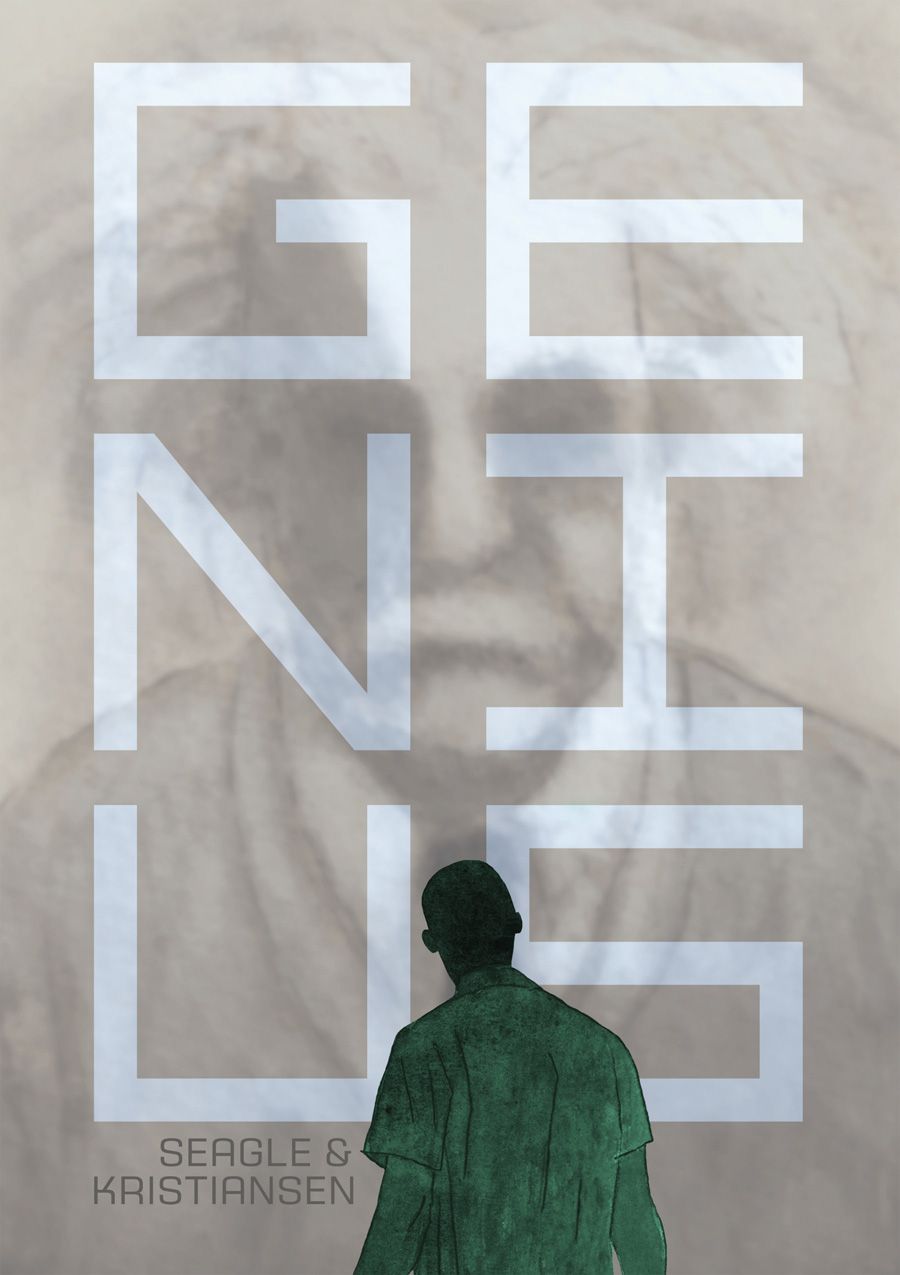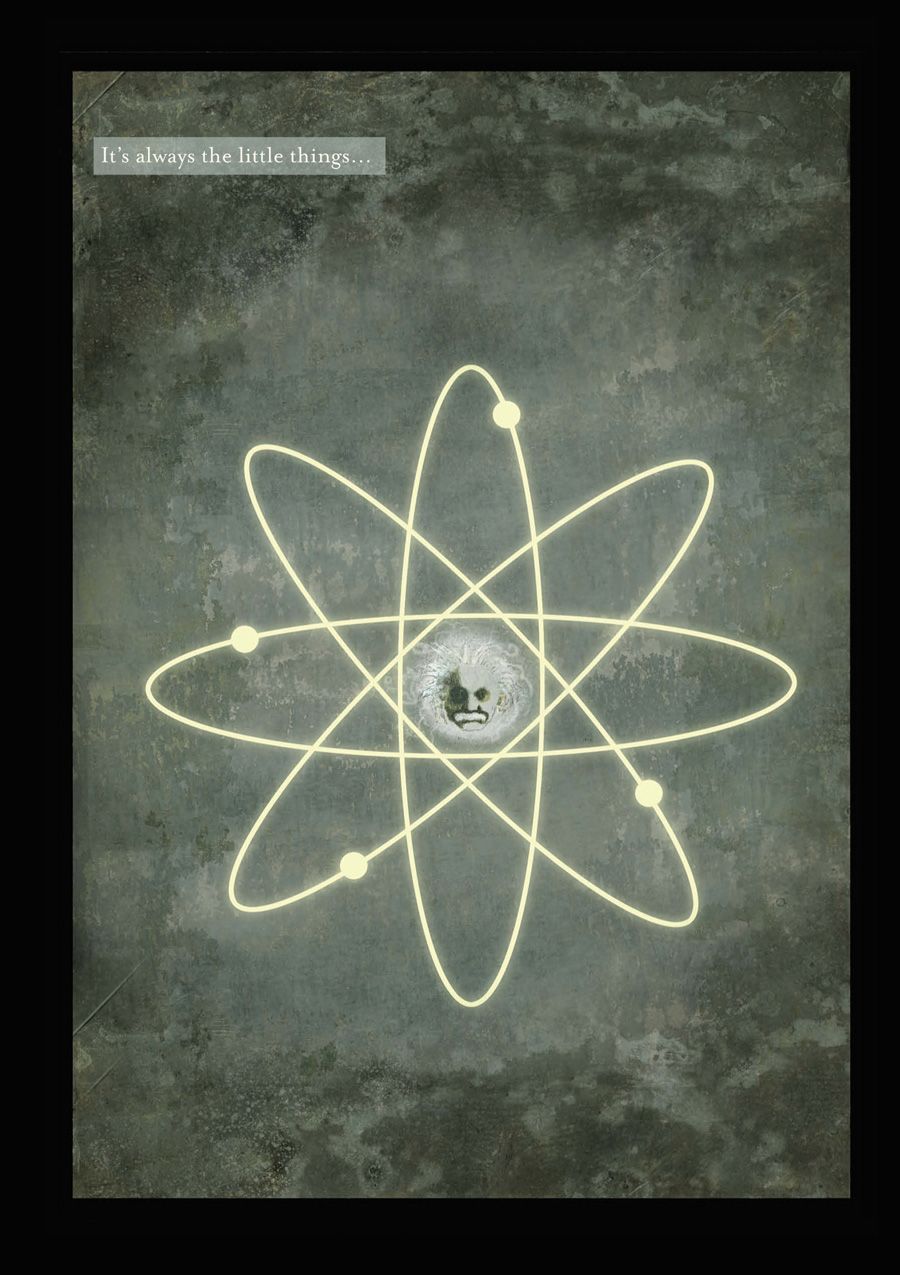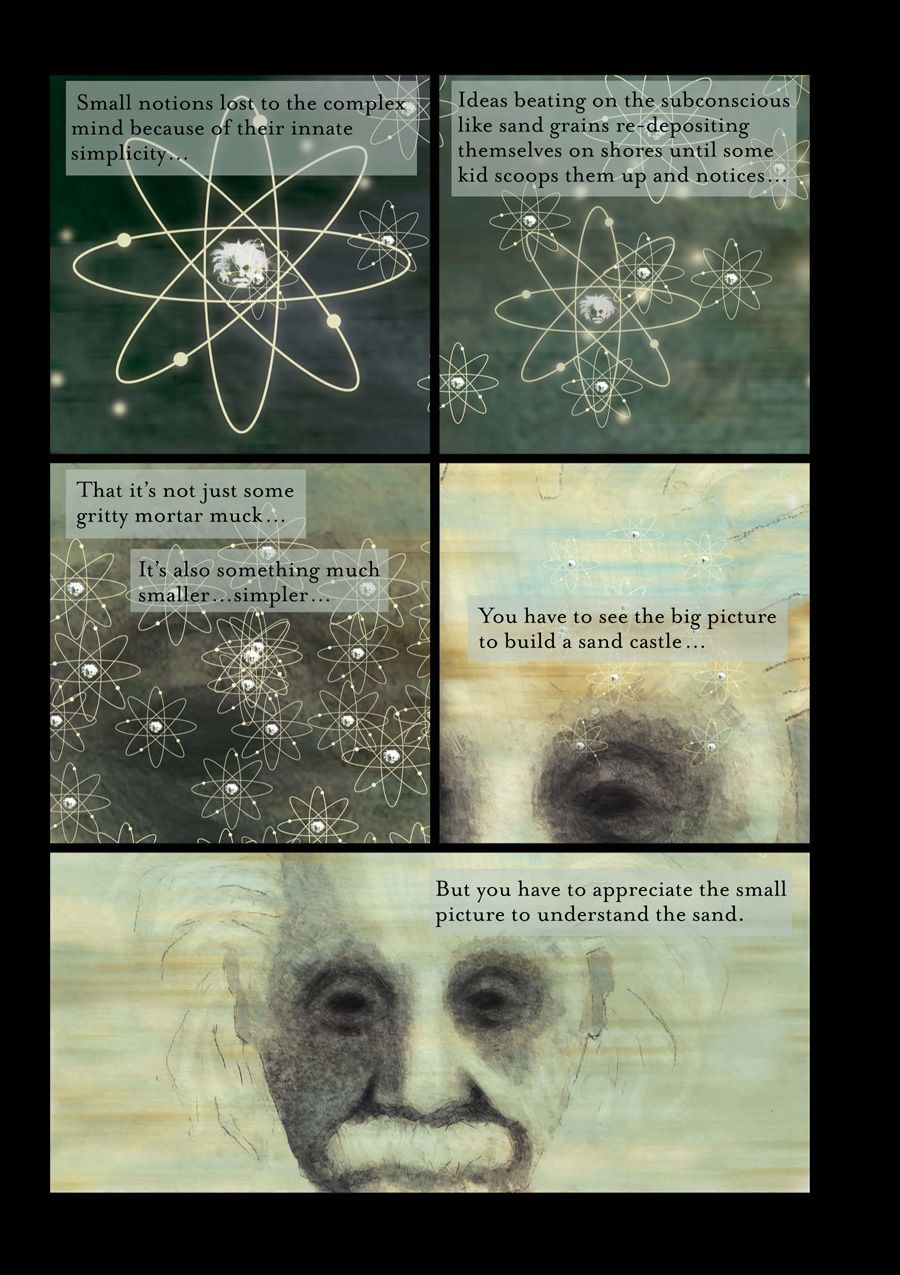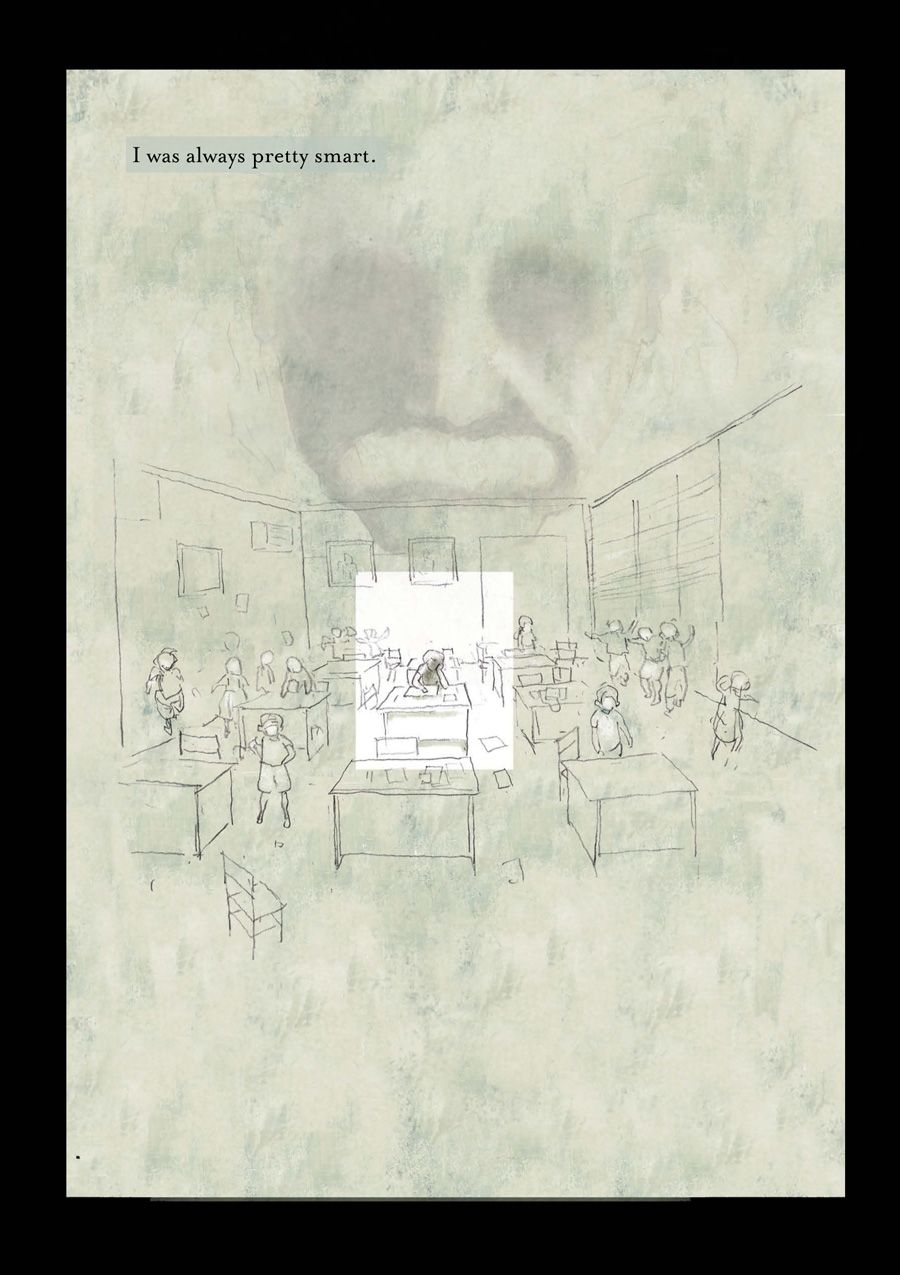Teddy Kristiansen has been making comics for more than twenty years across a vast array of projects including "Grendel Tales: Four Devils, One Hell," "Witchcraft" and "Sandman Midnight Theatre." He's worked with a wide range of writers including Neil Gaiman, James Robinson, Matt Wagner and Denny O'Neill, but Kristiansen is best known for his many collaborations with writer Steven T. Seagle.
They collaborated on the ongoing series "House of Secrets" and the book's sequel miniseries "House of Secrets: Facade." Their followup was the Award-winning graphic novel "It's a bird...," for which Kristiansen received an Eisner Award. Kristiansen drew one issue of the short-lived DC Comics anthology "Solo" and last year Image Comics released "The Red Diary/The Re[a]d Diary." The first half of the book was an English translation of a graphic novel that Kristiansen wrote and drew for the European market and in the second half, Seagle, not knowing the Danish language, wrote a story filling in the word balloons and captions based solely on the artwork.
The duo's new project is "Genius," which was released this summer by First Second Books. At Comic-Con International in San Diego, Seagle announced that the two are hard at work on a new project, "Mercury," which they are approaching in yet another new and challenging way from their previous collaborations. Kristiansen spoke with CBR News over e-mail to get the latest on "Mercury" and his collaborations with Seagle.
CBR News: First of all, congratulations. This has been a big year for you. "Genius" was released earlier this year and you were up for an Eisner award for your previous book, "The Red Diary/The Re[a]d Diary." DC Comics also reprinted two of your major works in an omnibus of "House of Secrets" and a collection of "Solo," for which you drew one issue. Does it feel like a big year?
Teddy Kristiansen: Well, I will probably never in my life have this many books out at the same time or within such a narrow period, and that feeling is fantastic and absolutely feel[s] like a very Big Year. I am far into my next book with Steve and close to finishing a collection of short stories I have written myself (still haven't approached a publisher), so these should be out next year as well. So due to the fact that I normally don't publish that frequent, the feeling is fantastic.
You first started collaborating with Steven T. Seagle on "House of Secrets." You've worked with plenty of talented writers over the years, but what is it about him and his work that you enjoy?
Steve was the gentle man (and gentleman) I first met at a crazy San Diego Con, so this very calm soul stood in front of me and I had read his book "The Amazon" he had done with Tim Sale and loved it. We quickly found out we shared a mutual love for story structures, abstract texts, poetry, plays, and music, which led us to very naturally wanting to work together. He is a master on so many levels and I adore and embrace that I actually got to meet a soulmate, friend and a comic book partner that I will do many books with (until he says no more). I know many people in the fields of comics and children's books, that have never experienced this but only the work for hire, where an editor is sent a story from a writer and the editor sends it on to an artist who draws the book and the writer and the artist will never share a moment together or perhaps never meet. Such a sad way to make books and not one I like. Steve is always up for challenging himself and me.
When Steven first told you the idea for "Genius," what about the story appealed to you?
This is probably hard to answer. With Steve, I will do any idea he has, anytime, as I know it will be great. We have been working together for 17-18 years, which has brought a complete trust of one another, so whatever one of us wants to try or wants to tell, the other is always on for the game or challenge.
What were your favorite scenes from the book and what did you most enjoy drawing?
One of my personal favorites was when Steve wanted me to paint the very idea of the book (Einstein's lost theory). I couldn't be literal, and I always love any kind of obstruction, anything that forces you to re-think and forces you to put your all your energy in to what you are doing, making you you fully alert. Any kind of drawing/painting done with routine, is most likely also a very boring reading experience. I like it when you have have to be on your toes all the time.
What was your thinking behind the book's color scheme. It's very gray, there's not much color at the beginning and then there are sudden eruptions of color.
My idea was that the Einstein theory should be the one point in the book that should stand out in color scheme. The key point.
I also wanted the "reality" to be as low key as possible.
If it works, I can never know. I have all these ideas whenever I start a book of what and how I want to portray the story best, and then I just hope that the feeling and the choices are the right ones. Again, I always try to make the book an obstruction in my head, before I can start getting anything down.
"Genius" is smaller than a standard comic book and much smaller than "The Red Diary." How much thought do you give to the book's dimensions and how the book will look when it's finally printed?
The size is extremely important and how you lay out your whole book has a lot to do with the format it will be read in. The format for "Genius" does, for me, fit very well to the pace and subject. If it was printed in the same format as "Red Diary," I believe it would "scream" too much, be too "loud" if that makes any sense?
The amount of information per page is also very controlled by the printed size. I wanted the book to be light and flowing so I was very wary of not making it dense and forced.
Do you have anyone in your working life or career who functions for you in a similar way to how Einstein functions for Ted in "Genius?"
[Laughs] I have Steve and my wife, whom both will tell me if I am totally off key in my drawings. It can be hard to hear if something doesn't work but I always listen to what is being said and the evaluate. Criticism can be hard, but also important.
Talk a little if you would about your book "The Red Diary," which was published last year by Image. Where did this book come from and how much writing had you done previously?
Last year's "The Re[a]d Diary" marked both Kristiansen's first published writing, and yet another new way to collaborate with Seagle
The book started when I was approached by Jean Wacquet from Soleil, the French publisher, who asked if I ever wanted to do a book for them. I had been playing around with this art forgery story and had done the first 10 pages on the book, so asked if they wanted to do this one, and they said yes. Jean was a wonderful editor who left me to do what I wanted which was a blessing. I had read some articles and books on art forgery. I had heard of some Rembrandt specialists who travelled to all museums to determine if the Rembrandt paintings the museums had were proper Rembrandts or done by his assistants. One museum had turned down the visit as they didn't need, or wanted to know, this information.
So the idea of true painting by the artist or the idea of a true painting, appealed to me, so based my story on that idea. I love biographies so naturally wanted the story told from a biographer.
I had done "Solo" for Mark Chiarello at DC, who had this idea, that if you gave anyone total freedom to do what they wanted, they would do work from their heart. So I was blessed with his offer and had written a couple of short stories myself, and got Steve and [Neil] Gaiman to write me two short stories as well. I had done some writing and a few short comic stories just for myself, before this offer, most of which I never sent to publishers or took further but just to play with the media. I am very happy with my "Solo" issue and love Chiarello's idea of getting work from the heart. So sad the book got cancelled. All big publishers need flagships like this, to set sail for future big books.
I still am constantly writing on stories but I can see the difference with "professional" writers like Steve and Gaiman, who can get any subject presented and write from that. I can do the same when drawing/painting but my writing is for my personal playfulness.
How did your process of working on "The Red Diary" differ from how you work when you're given a script by someone else?
With full control I could write my story in batches to fit my needs. Some parts were done with a script, and other parts were done with thumbnails (small sketches) with writing or dialogue written in the margins. Just enough information for just me to interpret. This is the same method I use with all my writing.
Steven announced that the two of you are working on another project together, "Mercury," and that the two of you are working in a very unique way. Could you talk a little about this?
Again we try to put up as many obstructions as we can to make the process new and fresh, and again trying to challenge us both, to push us as much as possible. I had an idea for a story that I started telling Steve about and he just heard the first short brief, which was very open, just a fraction.
So we made an agreement that I am drawing the book with my very abstract idea in my head, and once I turn in the pages, Steve is allowed to swap panels from one page to another, and start writing his story.
In actual fact we don't know fully what the book will be about until we are done. We are almost 50 pages into the book and I should be done by the end of the year, early next year, so hopefully the book will be out by next summer.
"Genius" is available now.






